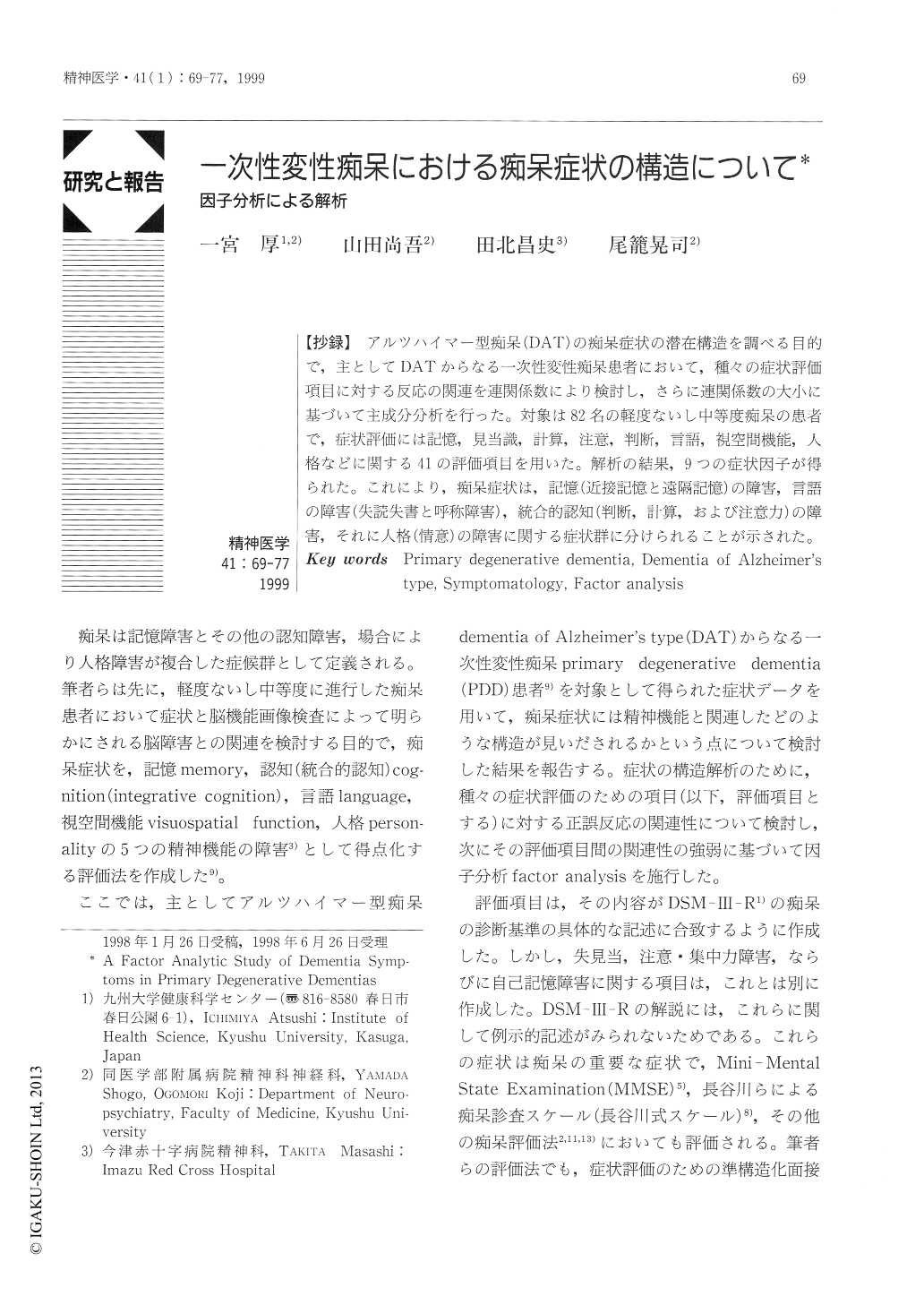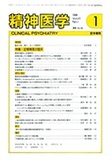Japanese
English
- 有料閲覧
- Abstract 文献概要
- 1ページ目 Look Inside
【抄録】 アルツハイマー型痴呆(DAT)の痴呆症状の潜在構造を調べる目的で,主としてDATからなる一次性変性痴呆患者において,種々の症状評価項目に対する反応の関連を連関係数により検討し,さらに連関係数の大小に基づいて主成分分析を行った。対象は82名の軽度ないし中等度痴呆の患者で,症状評価には記憶,見当識,計算,注意,判断,言語,視空間機能,人格などに関する41の評価項目を用いた。解析の結果,9つの症状因子が得られた。これにより,痴呆症状は,記憶(近接記憶と遠隔記憶)の障害,言語の障害(失読失書と呼称障害),統合的認知(判断,計算,および注意力)の障害,それに人格(情意)の障害に関する症状群に分けられることが示された。
In addition to conventional dementia rating scales, we used 41 items as a basis for estimating dementia symptoms under the aspects of disturbances of memory, orientation, integrative cognition including judgment and abstract, language, visuospatial ability, and personality. In order to elucidate the latent structure of dementia symptoms, we analyzed the data obtained through the above-described items in 82 mildly to moderately demented patients with primary degenerative dementias (PDD), the groups mainly included patients with clinically diagnosed dementia of the Alzheimer's type (DAT). The correlations of the answers to the items were then analyzed using a contingency coefficient, and nine clusters of symptoms were thus obtained using a factor analysis (principal component analysis) based on the correlation coefficients. As a result, the symptom clusters of memory (recent memory and remote memory), language (naming and visual language of writing and reading), integrative cognition composed of judgment, calculation, attention, and personality were identified as symptoms of DAT.

Copyright © 1999, Igaku-Shoin Ltd. All rights reserved.


